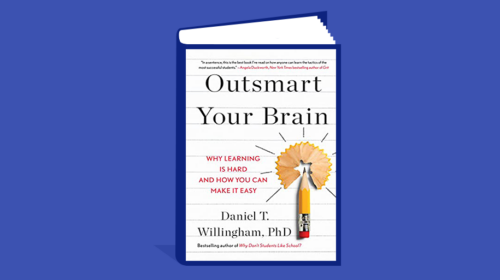
Outsmart Your Brain
Daniel T. Willingham | Curiosity
Why we love it: A fantastic book on how anyone can learn the tactics of the most successful students. Practical but backed by the latest science, Outsmart Your Brain is an on-ramp to the virtuous cycle of interest, confidence, and achievement. (And teens might want to check out the author’s informative TikTok videos posted @daniel_willingham.)
From pages 90-91:
It seems obvious why textbooks are hard to read. The material is dense; there’s a lot of information packed into relatively few words. Authors often feel obligated to give you a broad, complete understanding of a topic rather than to weave an interesting story from selected details. Teachers are ready to assign a textbook, even if it’s boring; it’s seen as a regrettable but unavoidable problem.
But there’s a more subtle reason that it’s hard to stay engaged when you read a textbook. To find out why, read this paragraph, one you might find in a typical high school textbook:
The Manhattan Project was the United States’ effort to produce a nuclear weapon, and it was the largest construction enterprise in the history of science. Because of its sensitive nature, a massive effort was made to keep the project secret. Famous scientists traveled under aliases; Enrico Fermi was known as Henry Farmer, for instance. And all telephone conversations at the test sites were monitored. Despite these efforts, historians agree that it probably would have been impossible to keep the secret if not for the fact that the project was of relatively small size.
Did you notice that the last sentence contradicted the first? Embedding a mistake or contradiction into a text and seeing whether readers notice it is a common research technique to measure comprehension. Readers are asked to judge each text on how well it’s written and explain their rating.
Readers are very likely to notice a word they don’t know. They are also very likely to notice if the grammar of a sentence is wrong. But they are much less likely to notice when two sentences contradict each other. Forty percent of high school students missed the contradiction in the paragraph above.
